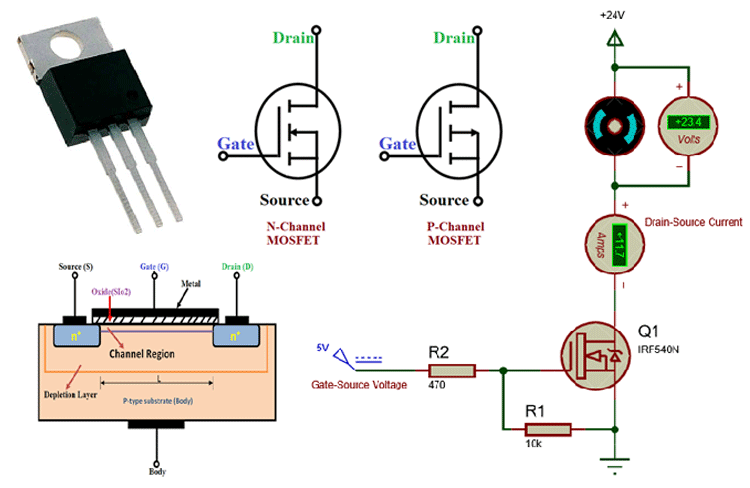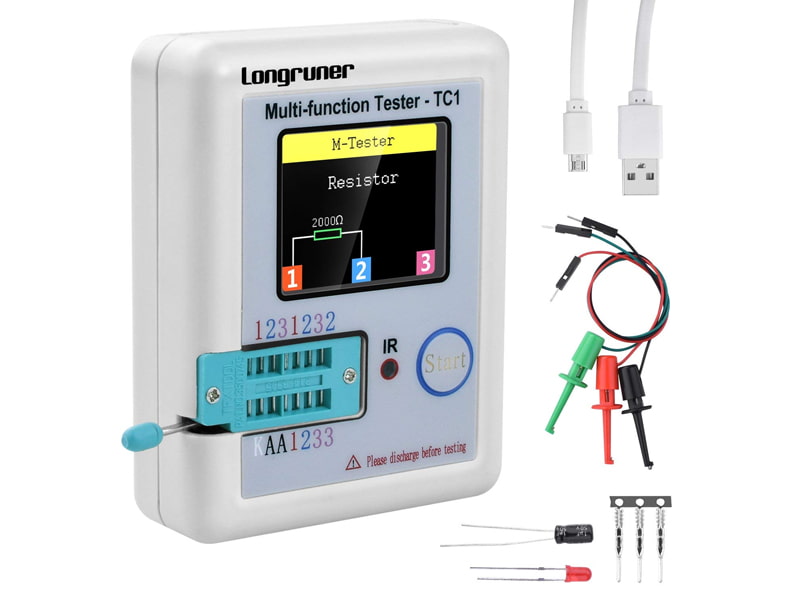Understanding MOSFET Basics
 Before diving into testing procedures, it’s essential to understand what we’re working with. MOSFETs are three-terminal devices with Source (S), Gate (G), and Drain (D) terminals. They function as voltage-controlled switches and are fundamental components in modern electronics, from power supplies to motor controllers.
Before diving into testing procedures, it’s essential to understand what we’re working with. MOSFETs are three-terminal devices with Source (S), Gate (G), and Drain (D) terminals. They function as voltage-controlled switches and are fundamental components in modern electronics, from power supplies to motor controllers.
Types of MOSFETs
There are two main types of MOSFETs you’ll encounter:
- N-channel MOSFETs (NMOS) – More common in power applications
- P-channel MOSFETs (PMOS) – Often used in high-side switching applications
Required Equipment
| Item | Purpose | Specifications |
|---|---|---|
| Digital Multimeter | Main testing device | With diode testing function |
| Test Leads | Connection to MOSFET | Good quality, insulated |
| Anti-static Mat | ESD protection | Optional but recommended |
Step-by-Step Testing Procedure
- Set your multimeter to diode testing mode (usually indicated by a diode symbol)
- Identify the MOSFET terminals using the component datasheet
- Test Gate-to-Source junction by connecting the positive lead to the Gate and negative to the Source
- Measure Gate-to-Drain junction following the same principle
- Check for shorts between Drain and Source in both directions
Detailed Testing Measurements
When testing MOSFETs with a multimeter, you should expect specific readings that indicate proper functionality:
Expected Readings for a Healthy N-channel MOSFET:
- Gate to Source: 0.6V to 0.8V (forward bias)
- Gate to Drain: 0.6V to 0.8V (forward bias)
- Drain to Source: OL (Open Line) in both directions when Gate is not activated
Common Testing Scenarios and Solutions
| Scenario | Possible Cause | Solution |
|---|---|---|
| No Gate-Source reading | Damaged Gate oxide layer | MOSFET needs replacement |
| Short between Drain-Source | MOSFET failure due to overcurrent | Replace MOSFET and check circuit protection |
| Inconsistent readings | Static damage or poor contact | Verify test setup and retry measurements |
Advanced Testing Considerations
Beyond basic multimeter testing, consider these additional factors for comprehensive MOSFET evaluation:
- Temperature effects on MOSFET behavior
- Impact of previous usage on device characteristics
- Environmental conditions during testing
- Significance of proper handling and ESD protection
Professional MOSFET Solutions
While testing MOSFETs is essential for troubleshooting, working with reliable suppliers ensures you start with high-quality components. As the authorized distributor for Winsok, a leading Taiwanese MOSFET manufacturer, Olukey provides:
- Premium quality MOSFETs with guaranteed specifications
- Comprehensive technical support and documentation
- Bulk ordering options for commercial applications
- Expert consultation for component selection
Troubleshooting Tips from Industry Experts
 Our technical team at Olukey has compiled these professional insights for MOSFET testing:
Our technical team at Olukey has compiled these professional insights for MOSFET testing:
- Always cross-reference measurements with manufacturer datasheets
- Document your testing procedures and results for future reference
- Use high-quality test equipment for accurate readings
- Consider environmental factors that might affect measurements
- Maintain proper ESD protection throughout the testing process
Need Professional MOSFET Solutions?
Skip the hassle of component testing and ensure reliable performance with Olukey’s premium MOSFET selection. Our partnership with Winsok guarantees you access to the highest quality components backed by professional support.
Why Choose Olukey:
- Direct access to Winsok’s premium MOSFET portfolio
- Expert technical support and component selection guidance
- Competitive pricing for bulk orders
- Fast shipping and reliable customer service
- 100% authentic components with full warranty
Conclusion
Understanding how to test MOSFETs with a multimeter is a valuable skill for any electronics professional or enthusiast. While these testing methods are essential for troubleshooting, working with reliable suppliers like Olukey ensures you start with quality components that meet your application requirements.


























